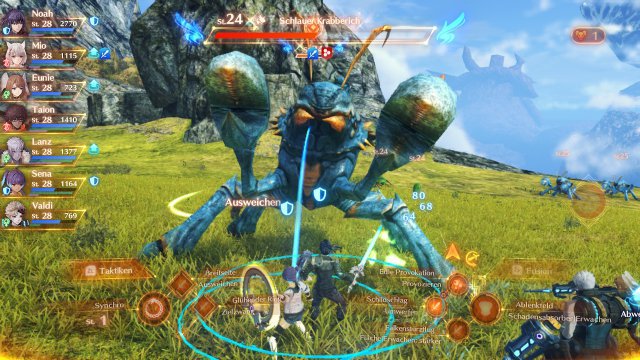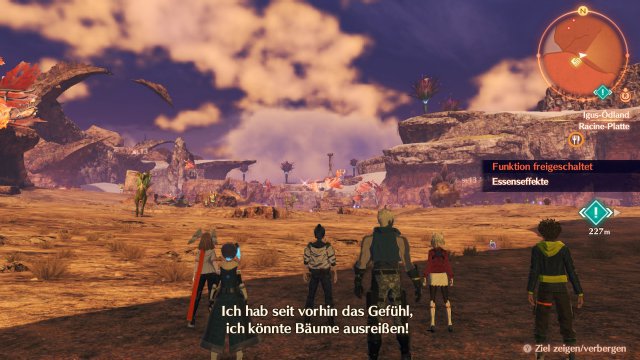A little world history
Flashback to 1999 (If you want to go directly to the description of part 3, please skip three sections…): A great year! The first Matrix movie finally proves that wearing shades indoors isn’t Edgelord fuss, it’s SAVING THE FUCKING WORLD. Fight Club provides the blueprint for The Kangaroo Chronicles and in Japan game designer couple Tetsuya Takahashi and Soraya Saga are leaving gaming giant Squaresoft. After their spectacular debut Xenogears, the two wanted to develop games on their own. While Xenogears still enjoys cult reverence today, it was punished with a disastrous development story that led to a game-playing half-baked second half and scorched earth with the publisher. The name of their own studio: Monolith Soft.
Trilogy finale
Over 20 years later, the Matrix franchise is drained of drips and Squaresoft, now Square-Enix, is also living on its former glory. Takahashi’s Xeno series, however, now a fixture in the JRPG lineup for Nintendo’s Switch as Xenoblade Chronicles, tirelessly tells dramas about technoid gods, all-too-human superweapons and annoyingly cuddly battle potatoes. Somebody had to maintain the stability… Nomen est omen, because as massive and inaccessible as a monolith often appears, it is just as durable. It is therefore not surprising that after Xenogears for PSone and the Xenosaga trilogy for PS2, the third part of Xenoblade Chronicles also shows the mixture of genius and megalomania that is usual for Monolith Soft and Takahashi. Xenoblade Chronicles 3 isn’t just a trilogy finale. It combines the world designs of the first Xenoblade Chronicles, released for Wii in 2010, with the setting of Sequels Sequels, released for Switch in 2017. That’s not necessarily a surprise, because in the switch remaster of the first part of 2020, a new epilogue called “Future Connected” predicted a common future for the two scenarios.
cult and criticism

Crab Hunter: Elite opponents marked with blue wings take significantly longer, but also throw off decent rewards.
However, the design decision is daring in that the fans of the series debut are not automatically fans of the sequel – and vice versa: Part 1 was originally conceived as “Monado: The Beginning of the World” and only shortly before the release in the Xeno -Canon added. Accordingly, this adventure with its original world building seems closed and independent, which puts the hero Shulk on the gigantic bodies of two titans frozen in battle. Back then there was scolding for the half-baked combat system and the flood of fetch quests. Part 2 reflected more strongly on its xeno origins and reinterpreted the “Blades” as personified superweapons that went into battle for a world tree in symbiotic connection with their owners. A refined combat system and grandiose world exploration made for love, but some critics didn’t quite get along with the Gatcha mechanics, the noseless-adolescent character design and the childlike main character Rex.
live to fight

Reinvigorated into the desert night. If you don’t like the current mood, you can turn the time of day forward if you wish.
Part 3 now wants to expand on the common strengths: boldly conceived science fantasy worlds, for whose fate interestingly coiffed youngsters fight with idiosyncratic super swords. The protagonist of the new part is called Noah and seems more mature than the juvenile Rex of the predecessor. In contrast to the drone-like cool Shulk from Part 1, Noah has access to his emotions and sometimes shows empathy. In the new world of Aionios, he must mediate in the war between the two enemy nations, Keves and Agnus. Or rather whistle, because Noah initially works as a signpost. Don’t worry, that doesn’t mean he just stands around in fancy landscapes and points out interesting things (maybe an idea for Hideo Kojima’s next game though). Noah is a born soldier. Literally. Like his fellow warriors, he was bred by the Queen of Keves to fight against the army of Agnus. If he survives this for ten years, he is allowed to dissolve into points of light in a cynical ceremony called “homecoming” and make his life force available again for the eternal cycle of war. So a little flashback like at the beginning of this text would cover more than twice the lifetime of Noah. Pretty dystopian.
.
The post Xenoblade Chronicles 3 – Review, RPG, Nintendo Switch appeared first on Gamingsym.
